Many older people find it challenging to retain their mobility as they age. And being active and mobile as we age is harder because our bodies change as we get older.
But the good news is that with proper exercise, we can maintain our muscles and joints strong and flexible as we age.
Contents
- 1 7 Types Of Hamstring Stretches For Seniors At Home
- 2 What Is A Hamstring Muscle?
- 3 Hamstring stretches for seniors
- 4 Benefits of Lying Hamstring Stretch:
- 5 Benefits of Lying Hamstring Stretch using a strap
- 6 Benefits of Hamstring stretch against the wall
- 7 Benefits of Hamstring Stretches while sitting on the floor
- 8 Benefits of Hamstring Stretches using a chair
- 9 Benefits of Standing Hamstring Stretch
- 10 Benefits of Hamstring stretch on a table
- 11 What are the symptoms of tight hamstrings?
- 12 How long does it take to loosen hamstrings?
- 13 Is it possible to tell the difference between hamstring pain and sciatica from the symptoms they both share?
- 14 How to note the Difference in Symptoms?
- 15 Final Thoughts On Hamstring Stretch
7 Types Of Hamstring Stretches For Seniors At Home
Exercises such as stretching can help prevent or delay the onset of diseases like diabetes and arthritis and improve your emotional well-being.

Today we will be discussing the hamstring stretches for seniors and how they are going to benefit you.
What Is A Hamstring Muscle?
A Tr-muscle group on the back of your thigh is called a hamstring. Soccer and tennis, both of which require a lot of sprinting or stopping and starting action, can tighten your hamstrings.
It is critical to keep these muscles loose. Tight hamstrings put you at greater risk of strain or ripping your hamstrings during exercise. It is easy to keep your hamstrings elastic with daily activities and stretches. Before stretching, it is a good idea to warm up your muscles.
Warm up your muscles by going for a stroll or doing something else active. Stretching your hamstrings two or three times each week should be a part of your weekly regimen.
Hamstring stretches for seniors
We have listed down the easiest and most effective hamstring stretches, which senior citizens should try to maintain a better lifestyle.
- Lying Hamstring Stretch
Extend your legs fully while you lie flat on the ground or mat. Right leg stretches are as simple as holding both knees together and pulling the leg up toward your chest while slowly straightening it until it feels stretched. For 10–30 seconds, hold the stretch position.

Benefits of Lying Hamstring Stretch:
- Tight hamstrings can exert pressure on the lower back because they restrict the mobility of the pelvis. A lying hamstring stretch can help your hips by increasing their flexibility.
- It even increases the range of motion.
- Loosening the hamstrings can make you sit and stand more upright.
- Hamstrings that are overly tight cause the pelvis to rotate rearward. As a result, the natural arch in the back can be flattened. However, lying hamstring stretches can avoid this.
- Lying Hamstring Stretch using a Strap
Extend out in front of you while you lie flat on the ground. Bend your right leg and place the strap across the ball of your right foot to extend your right leg. Take either end of the strap in your hands.
Strive to keep the left leg extended, and the foot contracted as you go through this exercise. Push the thighs and calves toward the floor by doing this. Extend the right leg slowly, keeping the foot contracted the entire time.
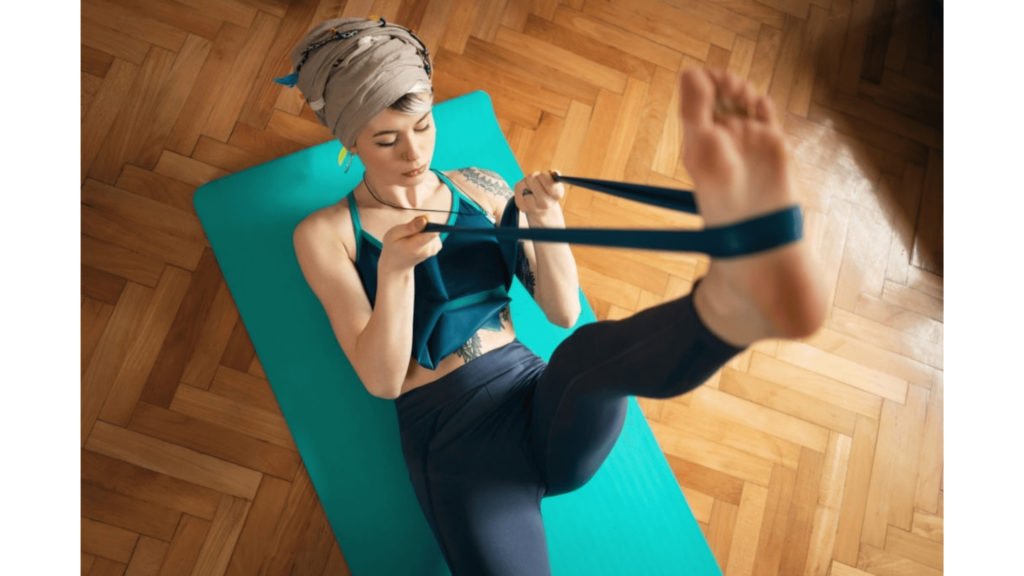
Gently tighten the hamstrings by pulling on the strap. For 10–30 seconds, hold the stretch position. Do this a minimum of twice more.
Benefits of Lying Hamstring Stretch using a strap
- With the strapped lying hamstring exercise, you can isolate and strengthen your hamstrings.
- You can also improve dynamic knee joint stability using the strap.
- You are less likely to get injured or experience discomfort if your hamstrings are strong.
- Strong hamstrings are important for exercising since they help to brace your knees and endure the stress.
- You can also stretch your quadriceps and alleviate back and quad tightness.
- Hamstring stretch against the wall
Look for a route out through a door that is not locked. Lie on your back with your left leg fully extended on the floor, either on the ground or on a mat. The doorway should be entered with the left leg. Lean your right leg against the doorway wall.
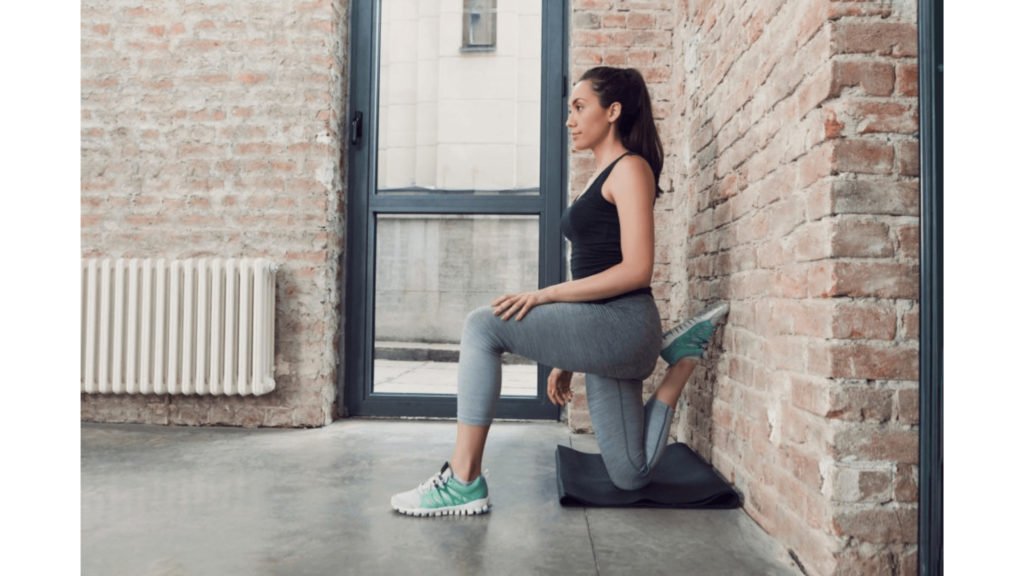
Put a little pressure on the right thigh by adjusting the distance between your body and the wall. For 10–30 seconds, hold the stretch position and do it at least three times.
Benefits of Hamstring stretch against the wall
- It Stretches the hamstrings and lowers the back.
- It enhances both digestion and sleep when taken before bed.
- You can get relief from swelling ankles and feet from standing or sitting for long periods.
- It comforts calves that cramp up, leg cramps, or foot discomfort benefit from it.
- When combined with a short period of meditation, this pose has the added benefit of helping to quiet the nervous system and restore equilibrium.
- Hamstring Stretches while sitting on the floor.
Sit on the ground with your left knee bent and your foot facing inward to extend your right leg. The butterfly position is what it is termed. Keep your right leg slightly bent as you extend it.
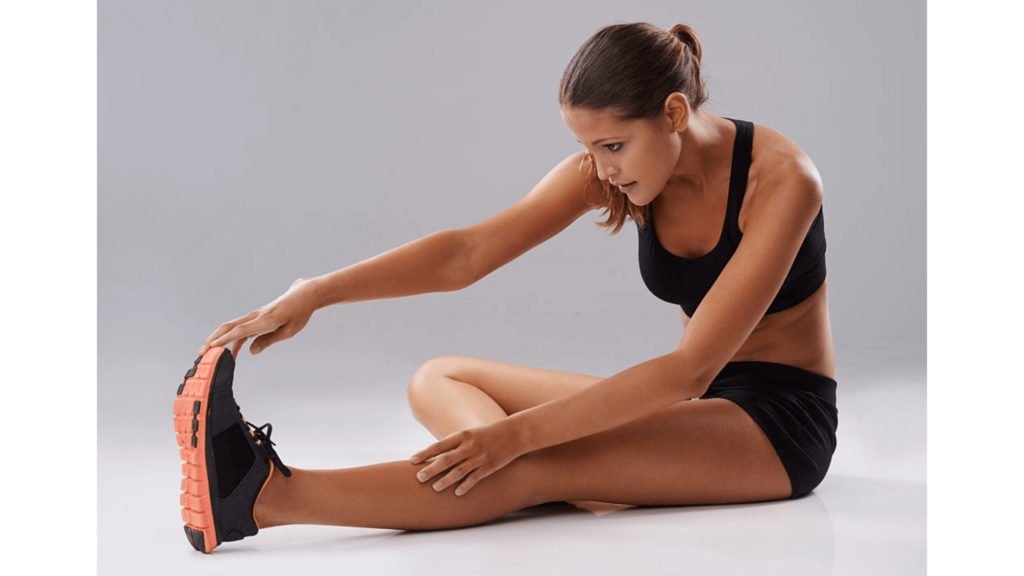
Make a forward bend at the waist while maintaining a straight back. For 10–30 seconds, hold the stretch position. Repeat a minimum of three times before moving on.
Benefits of Hamstring Stretches while sitting on the floor
- There are a variety of methods for stretching the hamstring muscles in the back of the legs.
- The key is to find one that is effective and does not put undue strain on the sciatic nerve.
- It is a safe and effective way to help relieve sciatica discomfort.
- It reduces back pain.
- Hamstring Stretches using a chair.
Sit with your back against the chair’s edge. Keep your feet firmly planted on the floor at all times.
You can do a calf stretch by extending your right leg straight out in front of you. Put your hands on your left leg and bend forward at the hips to support yourself.
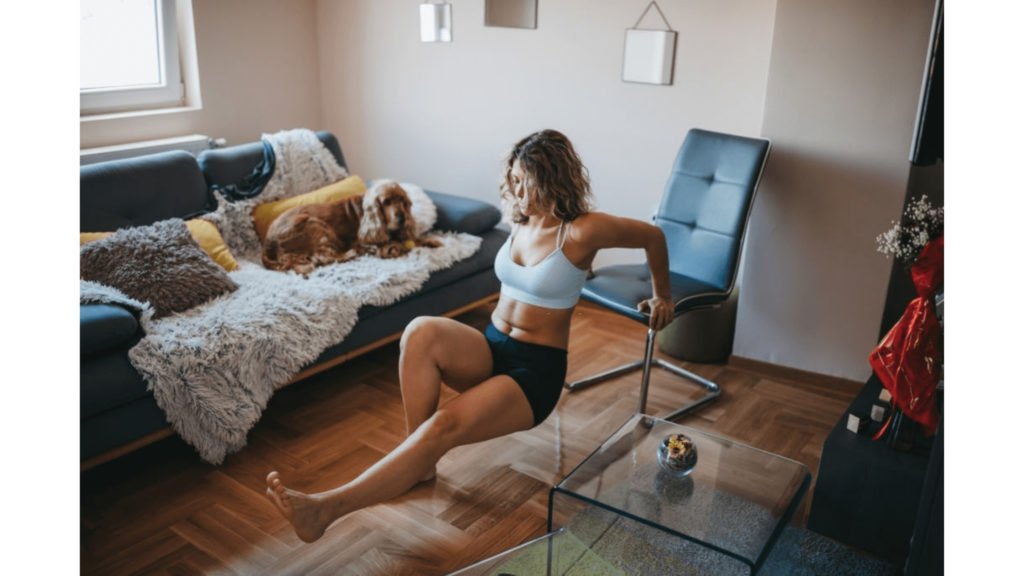
Ascertain that the spine is in a neutral position before beginning any exercise. For 10–30 seconds, hold the stretch position. Do this a minimum of twice or more.
Benefits of Hamstring Stretches using a chair
- Lower back pain and sciatica are frequently attributed to tight hamstrings.
- Widens the range of motion for the back.
- Stretching your hamstrings can aid in the recovery process and help to lessen your risk of developing back problems.
- Stretching your hamstrings using a chair can enhance your flexibility and joint range of motion.
- Standing Hamstring Stretch
Hold your spine in a neutral position by standing up straight. The right leg should be placed in front of the torso, with the toe pointing up and the heel firmly planted on the ground. Bend the left knee just a little bit.

Put your hands on your straight right leg as you gently lean forward. Maintain a straight back. Keep your hamstrings stretched for 10–30 seconds before releasing. Do this a minimum of twice or more.
Benefits of Standing Hamstring Stretch
- An effective bodyweight exercise for toning your hamstrings is the standing hamstring stretch.
- It is an excellent leg and balance strengthening exercise.
- It is easier to climb stairs, lift weights, and bend over when your lower hamstrings are flexible.
- In addition to helping you run faster and with better form, flexible hamstrings can help you enhance the length of your stride and speed.
- Hamstring stretch on a table
Try to find a table that is no higher than the height of your hips. Keep your spine in a neutral position by standing up straight. Put your right leg with your foot flexed so that your toes point upwards. Make sure your foot and calf are the only parts of your body that touch the table.

When you feel a stretch, take a few steps forward and bend at the waist. Stretch more deeply by bending forward slightly and supporting your hands on a table or a leg. Hold the stretch to help your muscles become more flexible. Do this three times after waiting 15 seconds.
Benefits of Hamstring stretch on a table
- Prevent Lack of movement, poor seated posture, and an inactive lifestyle
- Persistent tightness in your hamstrings causes your pelvis to tilt forward, flattening the natural arch in your low back. Thus it Maintains good posture.
- Improves flexibility to a great extent.
What are the symptoms of tight hamstrings?
These are the following symptoms of Hamstring tightness:
- A snapping or popping sensation and sudden and acute pain while exercising
- Walking, straightening the leg, or bending over causes pain in the buttocks and lower back.
- Bruising
- cramping
- pain
- swelling
- tenderness
- redness
A doctor or physical therapist will do a complete physical examination to determine whether or not you have a hamstring strain. They will enquire as to the circumstances surrounding the accident and how the limb was harmed.
Stretching the hamstrings can help those with tight hamstrings by including hamstring stretches in their weekly regimen, either as part of an exercise or alone.
Physical therapy can help if tight hamstrings are a recurring problem. If there are any underlying issues, such as an injury, a physical therapist will examine you. After that, they will give you a list of stretches and exercises to try.
Another alternative is to have a massage. To loosen the hamstrings, have a professional massage therapist work on the muscles and soft tissues in your legs.
How long does it take to loosen hamstrings?
A Tight hamstring can be loosened in as little as 10 minutes. Lengthening your hamstrings can provide some relief during your first stretching session, even though it will only last a short time.
Because of this, you must make time for stretching every day.
It is not difficult to stretch your hamstrings, for the most part. They should not be painful or uncomfortable in any way. If your hamstrings are tight, it is best to skip stretching altogether.
Hamstring stretches can be performed while laying down, sitting, or standing up.
Stretching was proven to increase range of motion in a study that used a 4-week passive stretch treatment for the calf. To summarize, stretching your hamstrings three times each week for four weeks will enhance your flexibility.
Sciatica is a general word for discomfort in the back of the leg caused by irritation of the sciatic nerve. “Sciatic” comes from the sciatic nerve, a bundle of nerves that runs from the lower back down to the feet.
Because it supplies all of the posterior thigh (including the buttocks and hamstrings) and the entire lower leg below the knee, it is the body’s thickest and longest nerve.
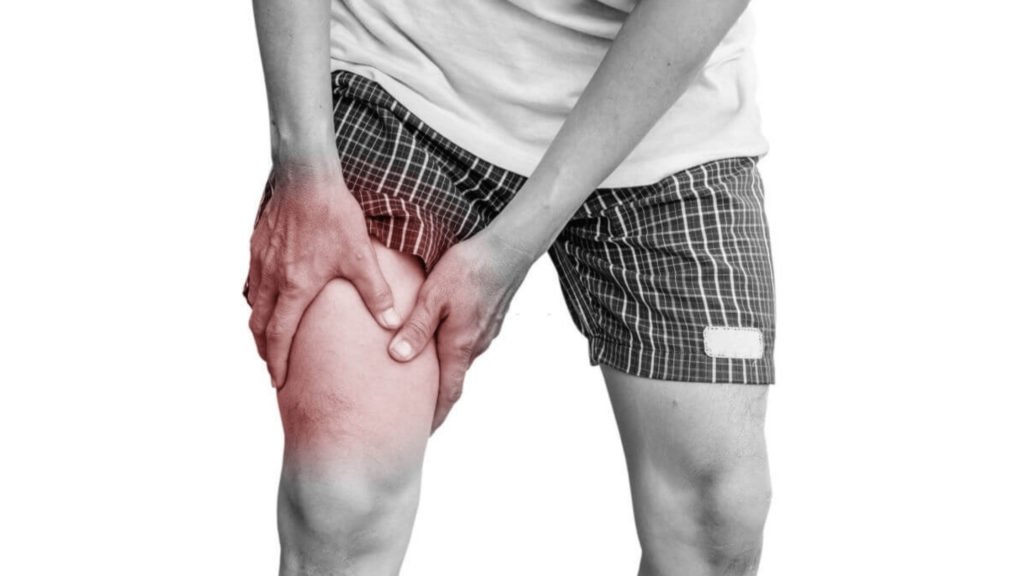
When someone talks of sciatica, they are referring to the discomfort that originates in the sciatic nerve. So, this can refer to any pain in the buttocks, hamstrings, or lower leg caused by a nerve.
How to note the Difference in Symptoms?
Sciatic nerve tightness can be distinguished from hamstring tightness by lowering dorsiflexion (by pointing the toes, as the sciatic nerve extends to the big toe) at the ankle, bending the knee somewhat, and flexing the hip more.
This position can help us determine if the tightness and pain are coming from the sciatic nerve rather than the hamstring muscles if it is changed or erased. Sciatica and a strained hamstring have a lot in common in terms of symptoms. Harp pain, scorching agony, shooting pain, itching, pins and needles, numbness, and weakness are possible symptoms.
Any or all of these signs can indicate that the pain is nerve-related, but we are unsure of what type of nervous pathology or what can be causing it until the patient presents with all of these symptoms. Active people are more likely to experience back pain, which can be exacerbated by hamstring stretching.
However, the treatment for hamstring strains differs greatly from that for sciatica. Where does the discomfort originate in your thigh, and how can you find out what is causing it? A few points can help:
- The slump test is the simplest way to tell if you have sciatica or a hamstring strain.
Legs dangling off the floor sit on the edge of a bed. Slump with your chin on your chest and your wounded leg up. Then, kick it straight up with your other leg. If you have hamstring or sciatica pain, this should recreate it.
Replicate the maneuver as many times as necessary until you feel discomfort in the back of your leg. While doing so, maintain a reclined position and extend your leg straight out in front of you. If that relieves your back-of-the-leg ache, then your sciatic nerve is at blame, not your hamstring.
- The Straight Leg Raise test.
Research has shown that this test is highly sensitive for sciatica and back leg nerve pain. An ankle dorsiflexion test is used to apply strain on the whole nerve while the patient is lying on their back with their knees extended and their toes pulled towards them.
To determine the leg’s angle, the patient’s leg is elevated till they detect tightness. A positive test for sciatic nerve involvement is one in which there is a difference of more than 5 degrees between the affected leg and the good limb, and the test reproduces the patient’s symptoms.
- Stretch your hamstrings by bending your knees.
To distinguish between sciatic nerve and hamstring tightness, reduce dorsiflexion at the ankle, bend the knee slightly, and flex the hip more. The sciatic nerve travels from the little toe to the big toe. It is safe to assume that if the tightness and pain subside in this posture, it comes from the sciatic nerve rather than the hamstring muscles.
- Testing the lumbar spine’s flexibility.
Furthermore, as previously mentioned, worsening spinal movements can help us determine whether the patient has nerve compression or sensitization. The extension (arching the back) can exacerbate symptoms in those with nerve compression. In contrast, it can alleviate symptoms in people with a sensitized sciatic nerve or do not affect them at all.
- Examination of the nervous system.
Strength, skin sensitivity, and reflexes are all part of the evaluation. Only those with a compressed nerve root will obtain favorable results from these tests (limited strength, feeling).
Final Thoughts On Hamstring Stretch
Before engaging in any physical activity, people should warm up properly. Performing stretches on cold muscles can cause strain or even damage to the muscle fibers.
After a workout, it is important to stretch to release any tension in the muscles. After an exercise, this can help muscles recover more quickly and lessen soreness. Not only does it help senior citizens, but Athletes and those who do not participate in sports can also benefit from hamstring stretches.
Stretching daily helps to maintain healthy blood flow and supple muscles. When you stretch your hamstrings, you improve your posture, increase your flexibility, and reduce your risk of suffering from lower back pain. Thus, hamstring stretches are the best exercise option for elders.